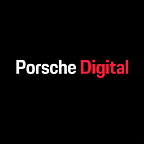VIN Art: The Technology behind the Artwork
Porsche Digital expands its portfolio with a customizable product, which transforms Porsche vehicles into individual pieces of art. For that, customers use a special configurator to create a high-quality VIN Art portrait of their dream car. What cannot be seen from the outside, is the huge amount of technical datapoints that go into each art work. David Appold, Product Manager at Porsche Digital, and coordinator of the VIN Art project, explains the technical requirements behind the portraits.
A VIN Art portrait is a unique artwork of an individual Porsche vehicle. With the VIN Art project, we at Porsche Digital are expanding our portfolio of digital products and work with our parent company, Porsche AG to achieve this goal. When it comes to art works, posters and memorabilia, however, customers are often stuck with generic, pre-defined representations of the car model. We now give Porsche enthusiasts the option of creating their own Porsche — with all its configuration details — as an art design and get a truly unique Porsche product. The magic behind VIN Art ultimately comes down to this: You do not just have a Porsche portrait decorating your living room, it is your own Porsche on the wall.
Using data to bring the Porsche feeling to life
The design generation behind the VIN Art portraits is complex. At the same time, it was important to us to keep this technical complexity “under the hood” and make the process for the user as intuitive and fast as possible. But how does the customer get his portrait? The key to unlock the data is the vehicle identification number (VIN for short), that allows us to decode and ultimately read out the configuration of a car. As soon as the user enters his VIN, the technical part starts automatically in the backend:
To decode the VIN it was essential to connect several interfaces and servers so that we at Porsche Digital have all the data on the car available. Usually, the prospective customer can directly see the vehicle in the configurator, which will later be depicted on the VIN Art portrait. Due to their individuality, the car renderings do not exist in stock and are created in a build-to-order process for every single VIN Art.
Some of the data we retrieve from the appropriate interfaces are, for example, vehicle images, as well as consumption data, the model series or possible special equipment. In order to generate the art prints, renderings of the vehicles are required, which we obtain from the Porsche AG. Thanks to an underlying algorithm that we built at Porsche Digital, the design then adapts perfectly to details of the original vehicle such as the exterior color. This allows us to offer a set of matching backgrounds in various styles that fit the customer’s car configuration to offer a harmonious artwork.
Connecting several interfaces
This digital product emerged from an interaction between Porsche Digital and Porsche AG. Porsche AG is an important part of the whole project because their databases store the vehicle data that can be accessed via the VIN and are therefore an essential part for creating the piece of art. With the VIN Art project, we have created an impact for the entire company by having several departments working together for the product. In the future, we can get even better across all departments in terms of corner cases or special requests.
Our team at Porsche Digital developed the idea for the VIN Art project and is now responsible for the product management and development of the technology. This includes, for instance, the UI/UX testing and implementation, as well as the front-end and back-end programming. Beyond that, VIN Art of course also has a strong physical component since we need to ensure and manage the quality of the final artworks. The biggest challenge was to link the various databases in which the vehicle information is stored and merge them into a simple and intuitive interface for the user.
For me, the VIN Art portraits are a great example of how intelligent technologies, algorithms, and taste in design can come together to bring the Porsche experience to life for our customers — on and off the road.
Taycan Turbo: Electric power consumption* combined (WLTP) 23.6–20.2 kWh/100 km, CO₂ emissions* combined (WLTP) 0 g/km, Electric range* combined (WLTP) 435–507 km, Electric range* in town (WLTP) 537–630 km // Porsche consumption data //State: 01/2023
Create your own VIN Art portrait
On the website www.vinart.digital, users can enter the VIN or a Porsche code to create these individual works of art.
About this publication: Where innovation meets tradition. There’s more to Porsche than sports cars — we are developing new digital products and services — always with our customers in focus. On our Medium blog, we tell these stories. It’s about our #nextvisions, emerging technologies, and the people that drive our digital journey. If you want to know more, follow us on Twitter, Instagram and LinkedIn.
